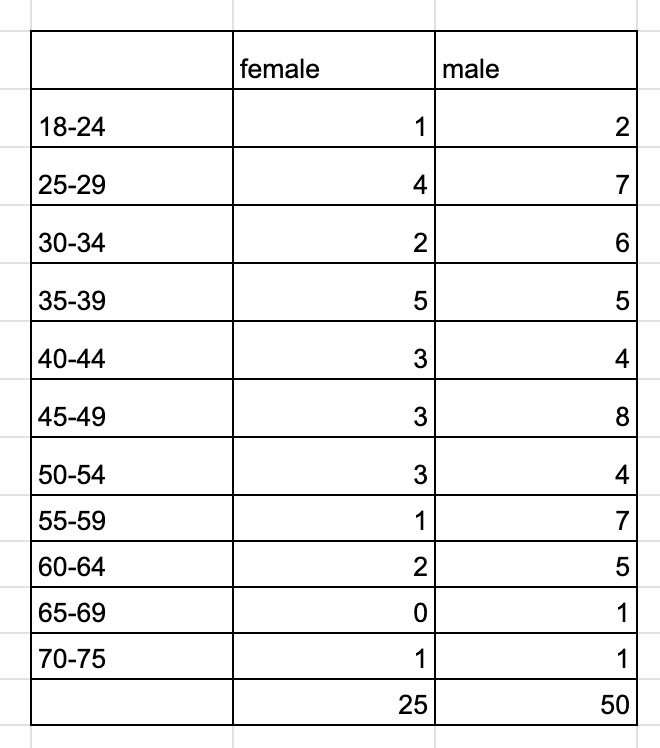Ironman’s New Qualifying System Explained
Ironman has recently announced a new “performance based” qualifying system which is to be rolled out for the 2026 Ironman and Ironman 70.3 world championship events. The system aims to be objective and allow Ironman to compare an individual’s performance across genders and age groups.
How does this work?
Firstly the winner of each age group automatically receive a qualifying spot. These are the only athletes which are guaranteed to be offered a spot now. If they choose to decline that spot, it will roll down but only to 2nd or 3rd place in that age group. If no one in the top 3 choose to take the spot, the spot is added to the performance pool spots.
Performance pool spots are awarded to athletes based on their overall ranking from there adjusted finish time. The adjusted finish time is created by applying a “handicap” adjustment to each age groups time. The handicap, or adjustment factor as ironman as coined it, is based on the average of the top 20% of World Championship finish times over the past five editions for each age group. Spots will continue to roll down the performance pool ranking list until all spots are taken.
Practical Examples
There does seem to be some confusion around this. Hopefully the way the system works will become clearer after reading through these examples, using real race results from Ironman Cairns this year. For these examples, we are going to assume Ironman Cairns has been awarded 75 Kona spots. Below is a table showing the Overall Performance Ranking List which has been created using the adjustment factor and excludes the winners of each age group as they have already qualified. I am also only showing down to 80th on the pool list for this example.
Click here to view Performance Pool Rankin List
After Age group winners, there will be a minimum of 54 Kona spots left over. Therefore we can guaranteed in this example that the top 54 athletes on the Performance Pool rankings will be offered spots. Here is how the distribution of the 75 spots looks like if everyone offered a spot was to accept it.
Now what happens if an athlete chooses not to take there spot? There are 8 different situations here which I will run through.
First situation: Winner declines and 2nd place takes spot but also in a qualifying position in the performance pool:
The winner of the male 45-49 age group declines their spot. The spot rolls down to 2nd place, who is ranked 6th on the performance pool. As 2nd place takes the winners spot, he is “removed” from the performance pool, with 55th from the original list being awarded a slot now.
Second situation: Winner declines and 2nd place takes spot but is not in a qualifying position in the performance pool:
The winner of the Female 55-59 age group declines their spot. The spot rolls down to 2nd place, who is ranked 108th on the performance pool. As they take a winners spot they are removed from the pool but as they were ranked below 54th position, a spot doesn’t roll dowm to 55th ranked.
Third situation: Winner and 2nd place decline spot and 3rd takes spot but also in a qualifying position in the performance pool:
The winner and 2nd place of the male 45-49 age group declines their spot. The spot rolls down to 3nd place, who is ranked 8th on the performance pool. As 2nd place declined there spot and 3rd place takes the winners spot, they are both “removed” from the performance pool, with 55th and 56th from the original list being awarded a slot now.
Forth situation: Winner and 2nd place decline spot and 3rd takes spot but is not in a qualifying position in the performance pool:
The winner and 2nd place of the female 30-34 age group declines their spot. The spot rolls down to 3nd place, who is ranked 101st on the performance pool. As 2nd place declined there spot they are “removed” from the performance pool, with 55th from the original list being awarded a slot now.
Fifth situation: Winner, 2nd and 3rd place decline spot and both were in a qualifying position in the performance pool:
The winner, 2nd and 3rd place of the male 45-49 age group declines their spot. The winners spot now rolls into the performance pool meaning there are now 55 spots for the pool. As 2nd and 3rd place declined there spot, they are both “removed” from the performance pool, with 55th, 56th and 57th from the original list now being awarded a slot now.
Sixth situation: Winner, 2nd and 3rd place decline spot. 2nd and 3rd are not in a qualifying position in the performance pool:
The winner, 2nd and 3rd spot in the Female 55-59 age group declines the spot. The spot rolls The winners spot now rolls into the performance pool meaning there are now 55 spots for the pool. The 55th ranked athlete in now offered the spot.
Seventh situation: Winner, 2nd and 3rd place decline spot. 2nd is in a qualifying position in the performance pool but 3rd are not in a qualifying position in the performance pool:
The winner, 2nd and 3rd spot in the Female 30-35 age group declines the spot. The winners spot now rolls into the performance pool meaning there are now 55 spots for the pool. The 55th and 56th ranked athletes are now offered spots.
Eighth situation: Someone in the performance pool who is offered a spot declines it:
This is the simplest one of all of them and doesn’t really require an example. The spot just rolls down the list one by one until a person take the spot.
Hopefully after all this you now have a slightly better understanding of how the new system will work once it comes into effect for the 2026 World Champs qualifying period.




